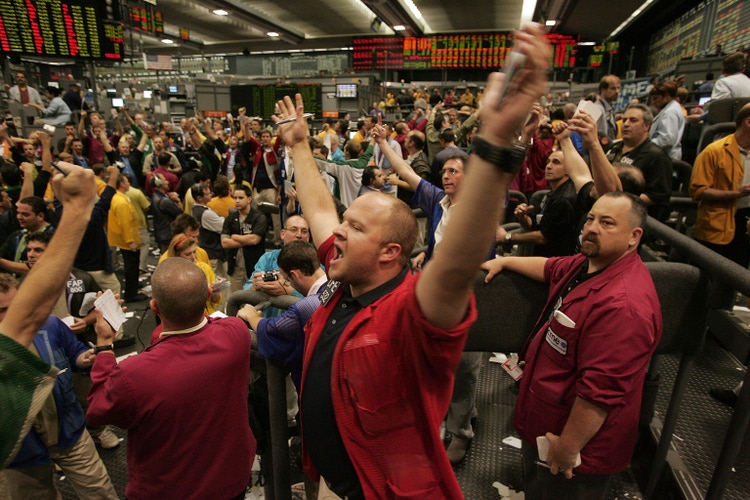
Scott Olson
Stock index future were little changed Tuesday following a rally that pushed the S&P 500 (SP500) out of correction territory.
S&P futures (SPX), Nasdaq 100 futures (NDX:IND) and Dow futures (INDU) were close to the flatline.
On Monday the benchmark S&P gained 0.7%, fully recouping the 10% decline that meets the standard definition of a correction in just 16 trading days. That is the fastest rebound since the 1970s, according to data from Dow Jones.
The recent “moves for the S&P now leave the index at its highest level since early August, having now advanced by +10.4% since the low in late-October,” Deutsche Bank’s Jim Reid said. “In fact on a monthly basis, the index is now on course for its best performance since July 2022.”
“Interestingly, that was another month when the newsflow was predominantly negative (European gas risks, Fed hiking 75bps), but growing hopes about a dovish pivot helped support a brief resurgence for markets, ahead of bigger losses over the next couple of months. So a potential word of warning if the Fed and others do stay hawkish.”
Lower Treasury yields were a big help to the S&P’s recovery and rates continue to be under pressure. The 10-year Treasury yields (US10Y) fell 2 basis points to 4.40% and the 2-year yield (US2Y) was flat at 4.91%.
Shortly after the start of trading, October existing home sales figures arrive.
Local Realtor “reports compiled by CalculatedRisk signal a trivial dip, to 3.94M from 3.96M,” Pantheon Macro’s Ian Shepherdson said. “This would mark a new cycle low, and leave monthly existing home sales down by 13% from their recent peak, in February.”
“This is in stark contrast to the new home market, where September sales were 34% above their cycle low, reached a year earlier. The key difference between the new and existing home markets is the relative supply picture. The huge gap between the average interest rate on outstanding mortgages – around 4% – and the prevailing mortgage rate, of 7.61% as of last week, is constraining discretionary listings of existing homes, because people can’t afford to move.”
The latest Fed minutes are due this afternoon.
“There is probably a desire to keep a hawkish tone in a (probably futile) attempt to contain the excitement of bond traders,” UBS’ Paul Donovan said.
